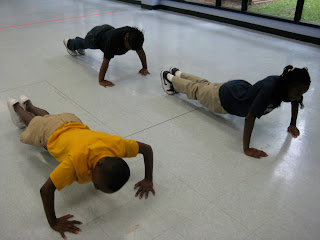Standard: PE 5.4: b. Participates in criterion-referenced fitness assessments with close teacher guidance and supervision (Ex. FitnessGram) and interprets results of fitness testing by comparing their scores with health related standards.
Objective: Students will create an exercise plan for a fictional student that does not meet the necessary standard on the PACER portion of the FitnessGram test. This will be done over a three week period.
Goal: Students will learn to plan goals and monitor their progress so that when they are out for spring break they can start their first week with their own plan to improve their individual scores.
Fitnessgram 15 Meter PACER Requirements
Points to consider when setting goals
Imagine you are a physical education teacher. It is your responsibility to help your students set goals for themselves based on their individual fitness levels. Your task is to help Michael exceed the standard number of PACER laps. Micheal is an 11-year-old male and can run 19 laps during the PACER test. Because Michael is one of your students and you want for him to exceed the standard, you have to create an exercise plan that will help Michael's endurance level when running.
Please provide the following information on a separate sheet of paper:
1. Is Michael in the Healthy Fitness Zone for PACER laps? Why?
2. What are THREE important points for Michael to know about setting goals? (Refer to the "Points to Consider when Setting Goals" Link)
3. Should you set new goals that are measurable and can be reached or set really high goals and work a long time toward meeting them?
4. Provide THREE activities that will help Michael improve his PACER score:
1. ___________________________________
2. ___________________________________
3. ___________________________________
5. Recreate the table below to map out your plan for Michael. Using your knowledge of goal setting, fill in each day you are going to want Michael to practice, what you want him to do during practice and how long or how much time for each practice.
SUNDAY
|
MONDAY
|
TUESDAY
|
WEDNESDAY
|
THURSDAY
|
FRIDAY
|
SATURDAY
|
6. If you are planning on monitoring Michael's progress, what days would you do this?
7. Reflect on the process of setting goals and how you could use what you learned from this WebQuest to set your own goals for the FitnessGram.



















